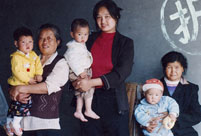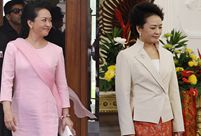 Close-up view of August Aerobatic Team
Close-up view of August Aerobatic Team
 Goddesses married in 2014
Goddesses married in 2014
 Polar region photos raise worldwide awareness of global warming
Polar region photos raise worldwide awareness of global warming
 Get off at the last stop — Beijing Subway in vision
Get off at the last stop — Beijing Subway in vision
 Top 100 beauties in the world!
Top 100 beauties in the world!
 Gallery: Who is the most beautiful one?
Gallery: Who is the most beautiful one?
 If you like autumn, put your hands in the air!
If you like autumn, put your hands in the air!
 Fan Bingbing's "Queen style" in new play
Fan Bingbing's "Queen style" in new play
 Lingerie show at 2014 Miss China
Lingerie show at 2014 Miss China
 J-10 fighters show aerobatic stunts in smog-free sky
J-10 fighters show aerobatic stunts in smog-free sky
Joint productions by Chinese and South Korean filmmakers, such as A Wedding Invitation, is a win-win for the movie markets in both countries.[Photo provided to China Daily]
"We try to provide with our resources what the Chinese market is short of. Thus we can achieve a win-win situation," he adds.
As one of the earliest South Korean movie companies to enter the Chinese market, CJ E&M has participated in producing a few Chinese films, including Sophie's Revenge (2009), its first joint production in China, starring Zhang Ziyiand Fan Bingbing, and What Women Want (2011), starring Gong Liand Andy Lau.
Though they pitched in with some thoughts for the scripts of both productions, says Lee, they mainly served as partial investors.
Last year, A Wedding Invitation marked the first attempt by CJ E&M to control the production of a Chinese film "from beginning to end", managing all aspects of moviemaking from writing to marketing.
"When I showed the film to a Chinese distribution company before post-production started, they thought it was a purely Chinese film yet of an exceptional quality. That's when I felt rather proud of our South Korean production team," says Lee.
The romantic film earned nearly 200 million yuan ($32 million) on the mainland, making it arguably the highest-grossing Chinese-South Korean production and a source of confidence for CJ E&M to carry on with its future plans that include at least four new films next year.
The movie collaboration between China and South Korea goes back at least 15 years. In 2000, China Film Co-production Corp and Taewon Entertainment produced the martial-artsmovie Bichunmoo. Similar movies were subsequently made but none was very influential at the Chinese box office.
A new cooperative model was then developed: Chinese investment and South Korean technical expertise, with Chinese director Feng Xiaogang as a case in point. He used a South Korean post-production and visual effects team for his war epic The Assembly (2007) and disaster movie After Shock (2010).
 |  |
 20 years on: Relocated Three Gorges residents through lens
20 years on: Relocated Three Gorges residents through lens PLA HK Garrison veterans leave behind beautiful smiles
PLA HK Garrison veterans leave behind beautiful smiles Representative beauties of each province in China
Representative beauties of each province in China Chestnut girl goes viral online
Chestnut girl goes viral online Victoria's Secret Fashion Show
Victoria's Secret Fashion Show In photos: Bright and brave female soldier of PLA
In photos: Bright and brave female soldier of PLA China's charming first lady
China's charming first lady Excellent photos of Zhuhai Air Show
Excellent photos of Zhuhai Air Show China's heavyweight aircraft
China's heavyweight aircraft Christmas factory
Christmas factory Xi’s book enhances mutual understanding
Xi’s book enhances mutual understanding Stock markets fall back sharply
Stock markets fall back sharply Report details luxury cars in China
Report details luxury cars in ChinaDay|Week|Month